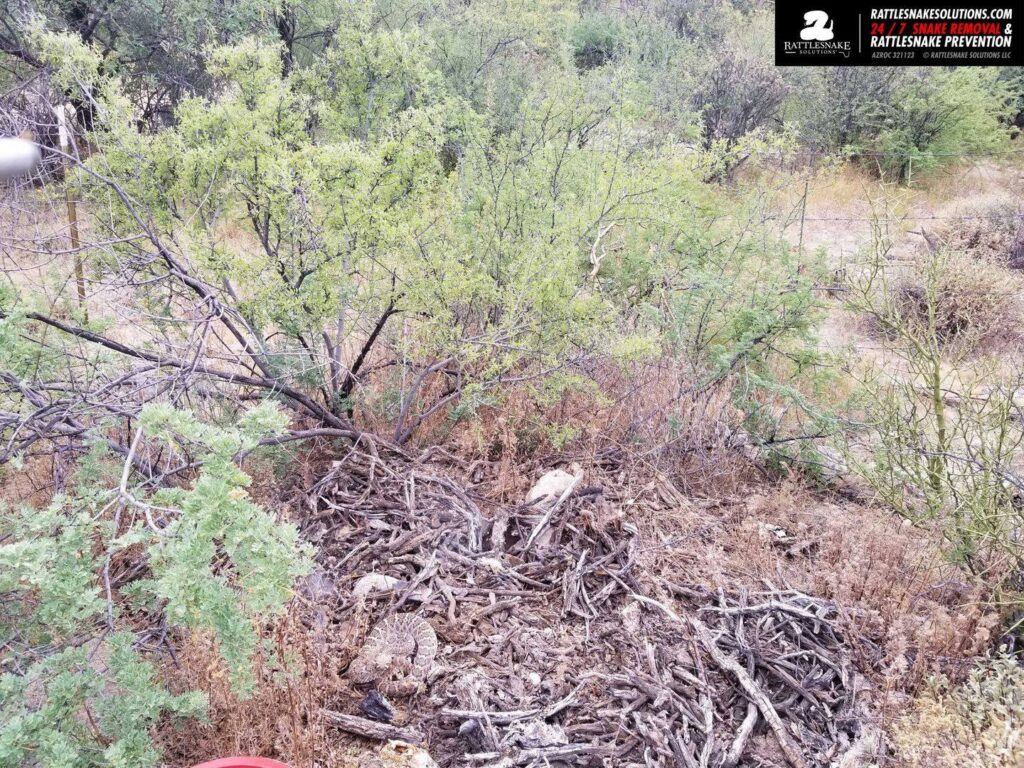
This is a rattlesnake post in disguise. Though you’ve likely clicked through to learn all about how to get rid of a packrat nest, they’re really one in the same. Getting rid of packrat nests around your property is one of the top things you can do to immediately reduce the number of rattlesnake encounters at your property, second only to installing snake fencing.
The homeowners we talk to about their packrat problems often have had quite a difficult time keeping them to come back. They set out traps and poisons and often succeed in killing one or two, but the nests just seem to keep regenerating rodents. So, what can you do?
The issue is that getting rid of packrats has very little to do with getting rid of the rodents themselves, but eliminating the nest.
A packrat nest (also called a midden) is a collection of sticks and debris gathered by the rodent to create a protected, warm (or cool) insulated area to live and breed. These deep burrows are home to a variety of wild animals, which includes rattlesnakes. You can kill all the rodents you want, but unless you remove the nest, more will just move in.
Fortunately, this is very easy to do and any homeowner can get rid of a packrat nest in just minutes, and do so in a way that prevents them from coming back.
How do you get rid of packrats without using poison?
- Use a garden hose to flood the nest from the highest point in the nest. You want the water to completely fill the nest. Turn the water to half flow or less so that you can make sure water is getting down deep and not just collapsing the entrance. You also want any animals in there to come out and not become buried.
- Use a rake or other tool to completely pull off the debris on the top and open it up.
- Using the same tool (or any that will do the job), spread out the debris and make sure that the interior of the nest is completely exposed.
- The next day, flood the hole again, use the tool to collapse the entrance as much as possible, and either completely spread out the nesting material or get rid of it.
- Watch the area and at the first sign of any rodent starting to dig it out again, do exactly the same thing.
That’s it! Super simple and effective, and free (minus the cost of some water of course). In some instances you’ll need to do this a few times for persistent rodents, but it will work in time and it’s always a better option than destructive and costly solutions. Even better, you’ll not be using poisons that can kill all kinds of non-target wildlife.
